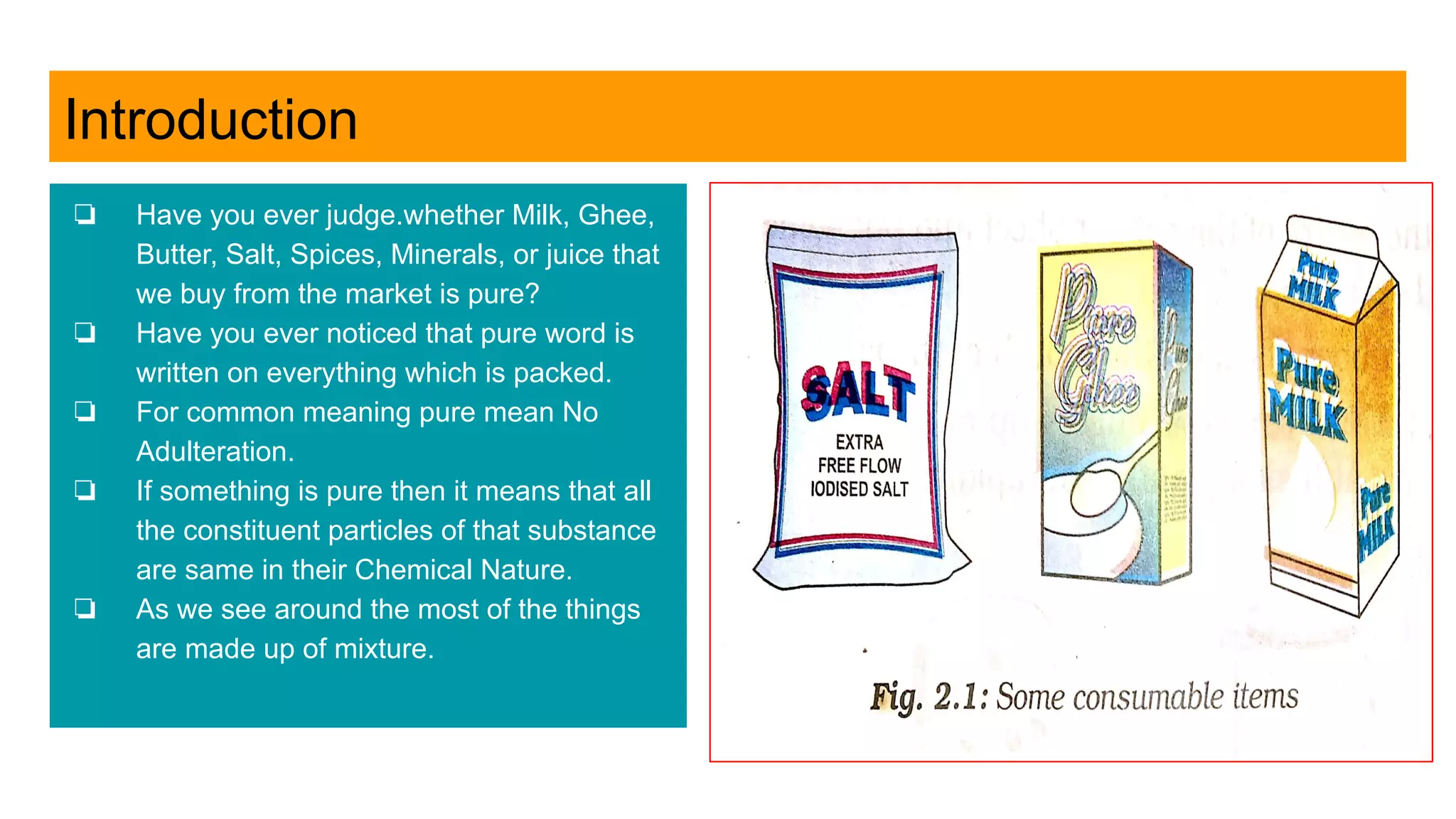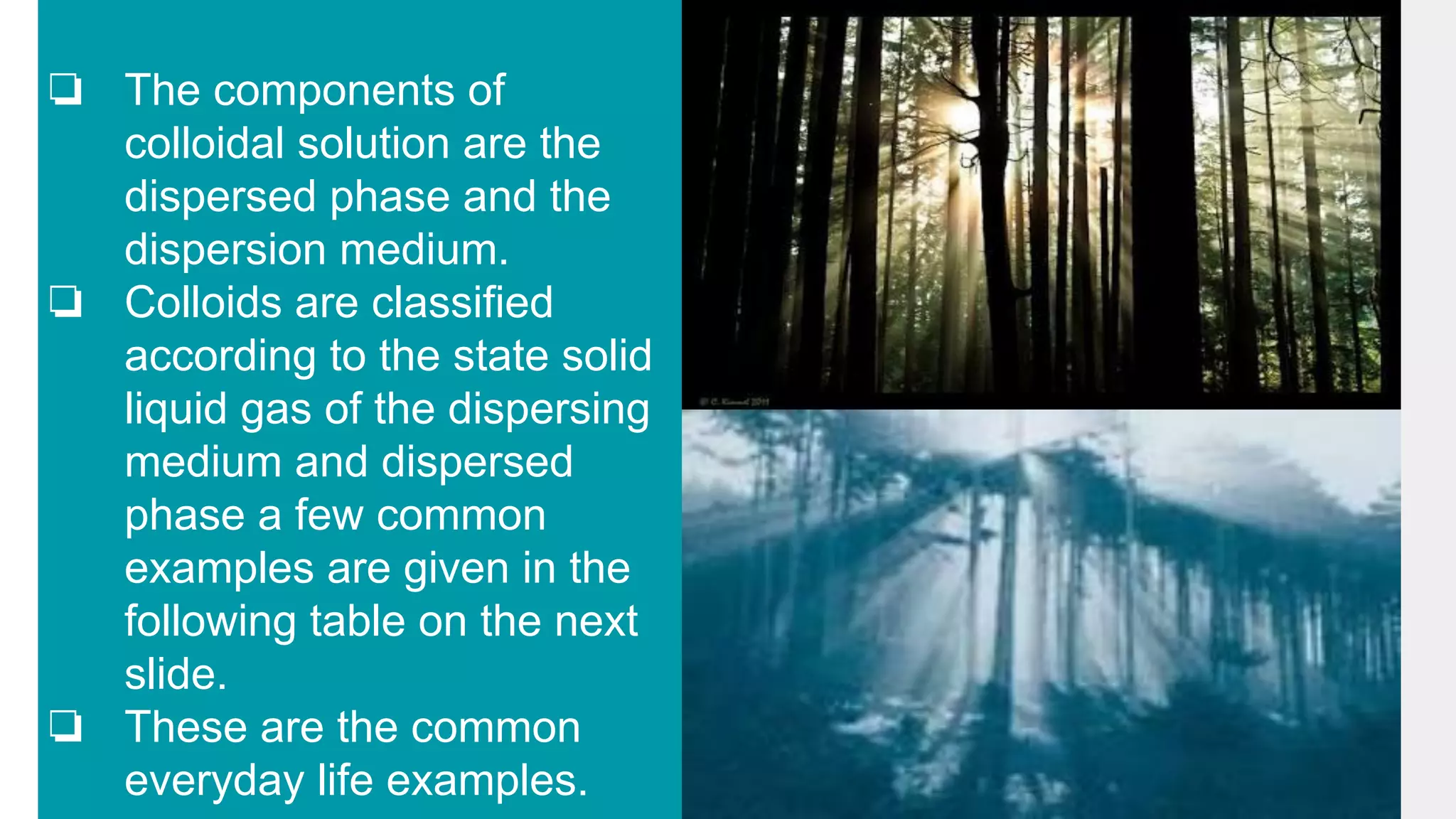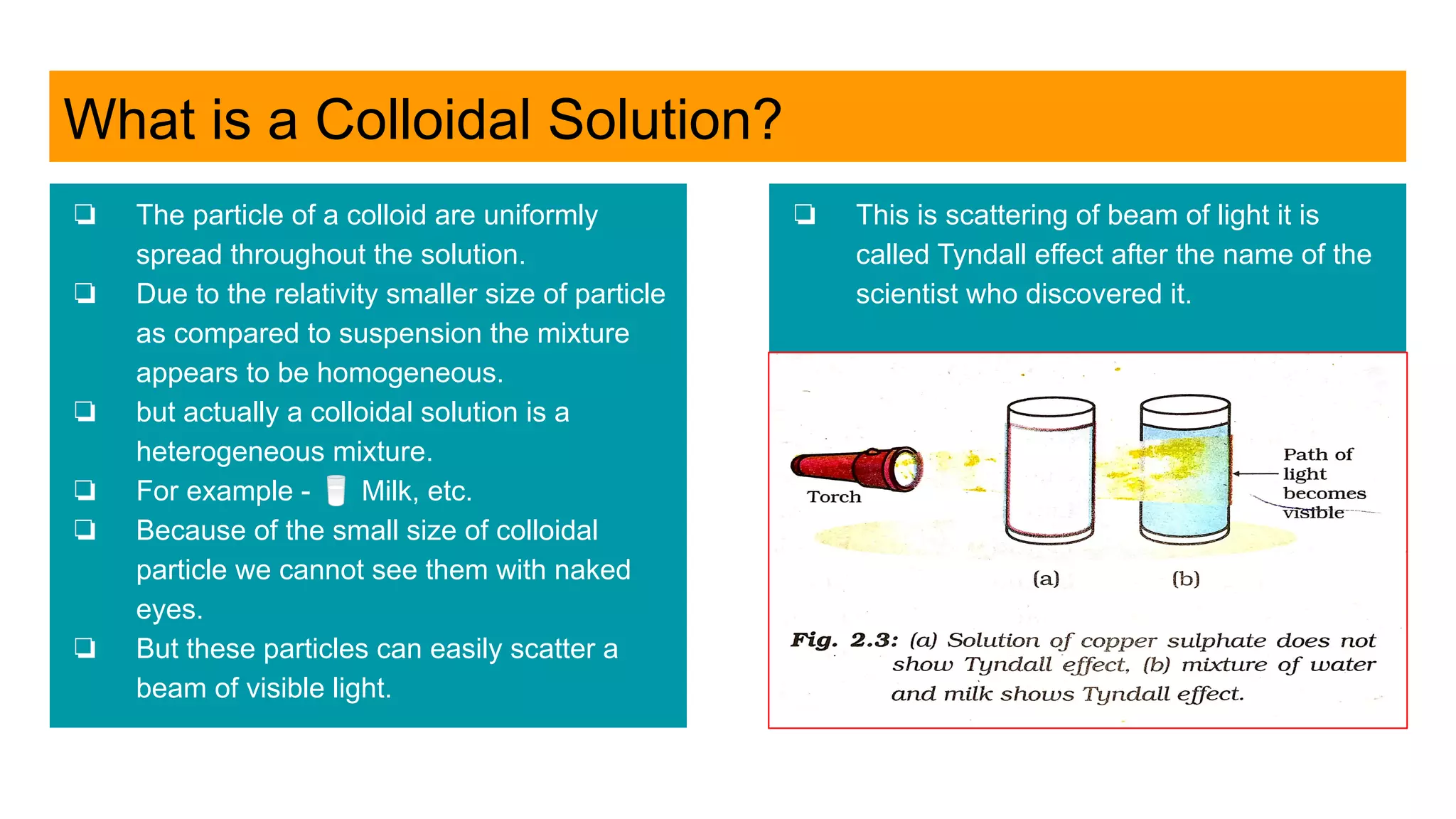Chapter 2 of the class 9 chemistry textbook by Vinay Kumar Maurya discusses the nature of matter, particularly focusing on pure substances, mixtures, and their types. It explains concepts such as solutions, suspensions, colloids, and various methods of separating mixtures, including filtration, centrifugation, and distillation. The chapter also covers properties of metals and non-metals, detailing their characteristics and changes during physical and chemical processes.























![Is the dye in Black Ink a Single Coloured?
❏ Take a thin strip of filter paper.
❏ Draw a line on it using a pencil
approximately 3 cm above the lower edge
[Fig. 2.8 (a)].
❏ Put a small drop of ink (water soluble.
❏ That is, from a sketch pen or fountain pen)
at the centre of the line. Let it dry.
❏ Lower the filter paper into a jar/glass/
beaker/test tube containing water so that
the drop of ink on the paper is just above
the water level, as shown in Fig.2.8(b) and
leave it undisturbed.
❏ Watch carefully, as the water rises up on
the filter paper. Record your observations.
The ink that we use has water as the solvent
and the dye is soluble in it. As the water rises on
the filter paper it takes along with it the dye
particles. Usually, a dye is a mixture of two or
more colours. The coloured component that is
more soluble in water, rises faster and in this
way the colours get separated.This process of
separation of components of a mixture is known
as chromatography, Kroma in Greek means
colour. This technique was first used for
separation of colours, so this name was given.
Chromatography is the technique used for
separation of those solutes that dissolve in the
same solvent.](https://image.slidesharecdn.com/class9chemistrychapter2-201012141859/75/Class-9-chemistry-chapter-2-24-2048.jpg)













